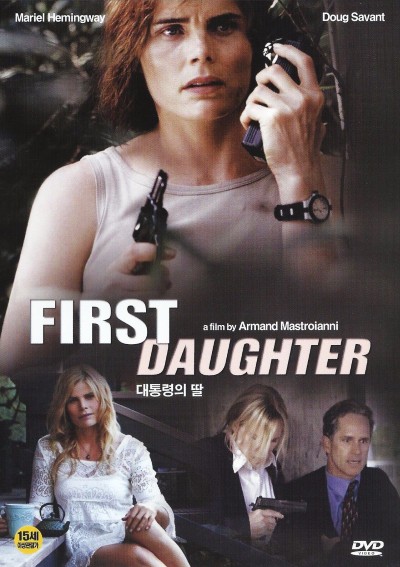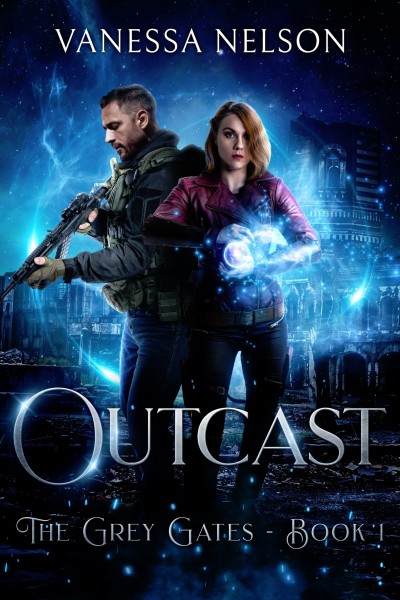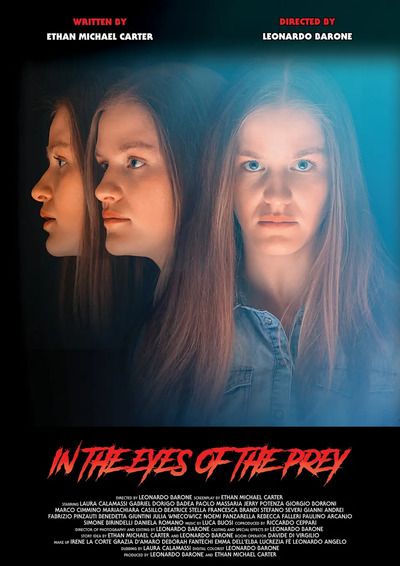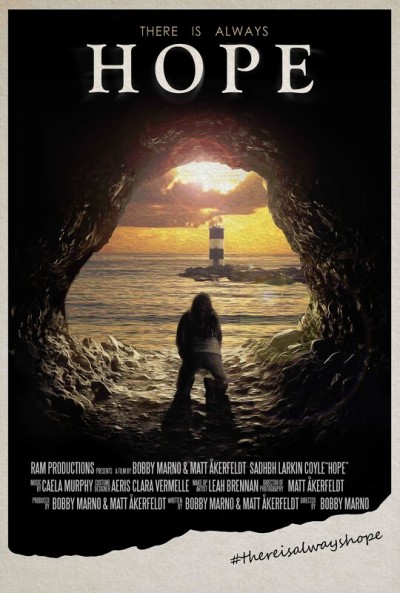★★
“Interesting premise, incredibly bland execution.”
 I liked the idea of this. A gang of five thieves, four women and Liev, give up the game after a robbery goes wrong and Liev gets arrested. He doesn’t give up his accomplices, who include his pregnant girlfriend Willa (Banus), and goes to jail. Six years later their daughter falls ill, and desperately needs matching tissue to repair her heart valve. The bad news: it has to be her father, who’s still in prison. Worse news: he’s in a coma, having been beaten up on the orders of the governor. Willa decides to put the band back together, along with an unlicensed surgeon, to break into prison, and extract the necessary tissue to save her daughter.
I liked the idea of this. A gang of five thieves, four women and Liev, give up the game after a robbery goes wrong and Liev gets arrested. He doesn’t give up his accomplices, who include his pregnant girlfriend Willa (Banus), and goes to jail. Six years later their daughter falls ill, and desperately needs matching tissue to repair her heart valve. The bad news: it has to be her father, who’s still in prison. Worse news: he’s in a coma, having been beaten up on the orders of the governor. Willa decides to put the band back together, along with an unlicensed surgeon, to break into prison, and extract the necessary tissue to save her daughter.
That’s not something I’ve seen in a film before. It’s certainly a twist on the usual “women in prison” subgenre, and the scope for a tense thriller, as the reverse heist unfolds, is obvious. Unfortunately, it’s the best part of an hour before we get to the execution, and there’s not enough to retain interest. It doesn’t help that the plot has so many holes through which you could drive an oil tanker. For example, Flynn (Ma) gets a job in the prison library, becoming the gang’s inside woman. She’s gaily snapping cellphone photos inside the jail, when two minutes of Googling confirms exactly what I suspected – that every prison I could find, has an almost zero tolerance policy for mobile devices.
Though in general, this correctional facility has security roughly comparable to your local electronics store, and you will be left with little confidence in just about anyone involved in the penal industry. Not that Willa and her team can really claim the moral high ground here, if you think about it. They are the “good girls” only because the film tells us they are. Given the first thing we see them do is robbing an armoured truck by threatening the driver with an explosive device, I’m not sure that’s truly the case in any court of morality. I’d rather have seen them embrace this ambiguity in some way, rather than dropping in a cliche straight from a Lifetime movie, a desperately ill child. Who can possibly root against Willa now?
Indeed, in tone, a lot of this feels like it could have straight in from a TV movie. Things do pick up somewhat down the stretch, not least with some unexpectedly graphic open-heart surgery, and when Willa is forced to make an unexpectedly difficult choice. However, it likely counts as a minimal spoiler to say that all ends well – at least, for the majority of the cast – with justice served on the bad people. [Robbery, it appears, does not count…] From a technical point of view, it’s reasonably well-assembled: “competent” would be the word, though it’s equally lacking in flair. The highest praise I can give this, is to say that I did not fall asleep. Might have been close in the first hour.
Dir: Ted Campbell
Star: Camila Banus, Jasmine Shanise, Virginia Ma, Shonte Akognon





 Well, after taking ten years to get from the third film to the first, the gap between first and second is
Well, after taking ten years to get from the third film to the first, the gap between first and second is  El Jardinero
El Jardinero This is a solid slice of urban fantasy, taking place in a city surrounded on all sides by The Wild. This is more or less what it sounds like, a wilderness inhabited by a variety of monstrous creatures, most of which pose a significant threat to human life. They’re kept out of the city by magical barriers, but these are imperfect. When they fail, and the creatures enter the city, it’s up to the Marshals to hunt them down and contain the threat. One such is Max Ortis, though she only joined them after being kicked out of the Order, eight years previously.
This is a solid slice of urban fantasy, taking place in a city surrounded on all sides by The Wild. This is more or less what it sounds like, a wilderness inhabited by a variety of monstrous creatures, most of which pose a significant threat to human life. They’re kept out of the city by magical barriers, but these are imperfect. When they fail, and the creatures enter the city, it’s up to the Marshals to hunt them down and contain the threat. One such is Max Ortis, though she only joined them after being kicked out of the Order, eight years previously. This one ends by informing us definitively that “Bang Bang Betty will return.” The statement may cause some confusion to viewers in this installment, because Bang Bang Betty is not present to begin with. No, this sequel to
This one ends by informing us definitively that “Bang Bang Betty will return.” The statement may cause some confusion to viewers in this installment, because Bang Bang Betty is not present to begin with. No, this sequel to  Well, that only took… twenty-one years. Back in 2003, I watched and reviewed
Well, that only took… twenty-one years. Back in 2003, I watched and reviewed  New rule. If ever I become an evil, kidnapping overlord, I shall be sure not to leave potentially lethal power-tools left lying easily accessible, around the place where the abductee is being kept. This is just one of the many mistakes made by the criminals here, in what could be an instructional guide on how NOT to execute a kidnapping. Admittedly, they weren’t aware that their victim suffers from multiple personality disorder. The alternate version is more than happy to wield the aforementioned power-tool – specifically, a nail gun – with extreme prejudice. It helps that these grown men and hardened criminals make it remarkably easy, for a 110-lb woman to overpower them in various ways.
New rule. If ever I become an evil, kidnapping overlord, I shall be sure not to leave potentially lethal power-tools left lying easily accessible, around the place where the abductee is being kept. This is just one of the many mistakes made by the criminals here, in what could be an instructional guide on how NOT to execute a kidnapping. Admittedly, they weren’t aware that their victim suffers from multiple personality disorder. The alternate version is more than happy to wield the aforementioned power-tool – specifically, a nail gun – with extreme prejudice. It helps that these grown men and hardened criminals make it remarkably easy, for a 110-lb woman to overpower them in various ways. Hope (Larkin-Coyle) is an aspiring vlogger, though has not yet figured out how to make it pay sufficiently to quit her grindingly dull day job, for a boss who perpetually questions Hope’s commitment. She’s not wrong, because Hope’s heart definitely lives in the outdoors, not at a desk or in a Zoom meeting. Her particular niche of content creation is in wilderness adventures, whether that’s going up mountains, diving underwater or – as in this case – scaling a cliff-face. She then posts the videos online, so that others can live vicariously through her experience. She’s excited for her next trip, which will take her back to a part of Ireland by the ocean, which was a favourite haunt of her late mother.
Hope (Larkin-Coyle) is an aspiring vlogger, though has not yet figured out how to make it pay sufficiently to quit her grindingly dull day job, for a boss who perpetually questions Hope’s commitment. She’s not wrong, because Hope’s heart definitely lives in the outdoors, not at a desk or in a Zoom meeting. Her particular niche of content creation is in wilderness adventures, whether that’s going up mountains, diving underwater or – as in this case – scaling a cliff-face. She then posts the videos online, so that others can live vicariously through her experience. She’s excited for her next trip, which will take her back to a part of Ireland by the ocean, which was a favourite haunt of her late mother. Reviewing director Profitt’s filmography on the IMDb is an interesting experience. He seems to have started off in the paranormal, drifted through pseudo-reality TV with titles like Untold Undercover Police Stories, and has now found a niche in the low-budget urban gangster field, for which Tubi seems to have an inexhaustible appetite. But the promise very much exceeds the product. Case in point: while the woman on the cover here
Reviewing director Profitt’s filmography on the IMDb is an interesting experience. He seems to have started off in the paranormal, drifted through pseudo-reality TV with titles like Untold Undercover Police Stories, and has now found a niche in the low-budget urban gangster field, for which Tubi seems to have an inexhaustible appetite. But the promise very much exceeds the product. Case in point: while the woman on the cover here  To be frank, I was expecting rather more action given the title here. Almost all of it, however, takes place “off-screen”, as it were, being described second-hand, rather than experienced. It makes sense in the context of the book, and it’s not badly written. But when you use the word “warrior” or derivations thereof, not once but twice in your title, it would seem fair to expect a higher quotient of… warrioring. I tagged this as fantasy, mostly because it clearly takes place elsewhere and/or elsewhen. It is fairly grounded e.g. no dragons or vampires, but certainly contains elements I would call mystical.
To be frank, I was expecting rather more action given the title here. Almost all of it, however, takes place “off-screen”, as it were, being described second-hand, rather than experienced. It makes sense in the context of the book, and it’s not badly written. But when you use the word “warrior” or derivations thereof, not once but twice in your title, it would seem fair to expect a higher quotient of… warrioring. I tagged this as fantasy, mostly because it clearly takes place elsewhere and/or elsewhen. It is fairly grounded e.g. no dragons or vampires, but certainly contains elements I would call mystical.